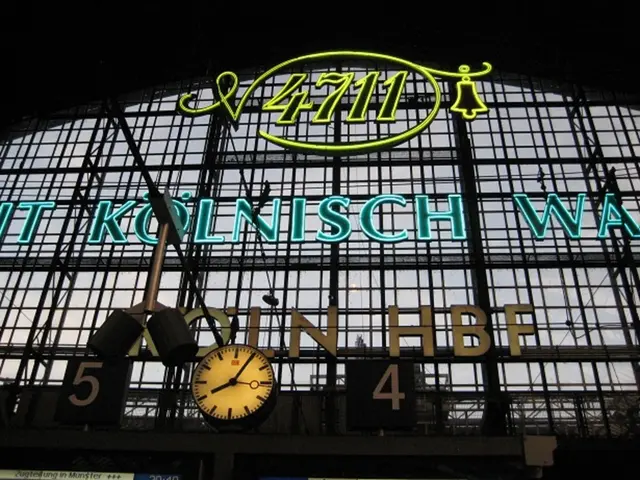Exploring the Intricacies of International Patent Laws: A Detailed Examination
=========================================================================================
The development of international treaties has played a pivotal role in shaping the global patent system, fostering cooperation, harmonization, and enforcement of patent rights worldwide. This evolution began with national patent laws, such as the U.S. Patent Act of 1790, which laid the foundational framework for patent protection[1].
Recognizing the need for cross-border protection in an increasingly interconnected world, early international agreements targeted broader intellectual property rights. For instance, the Paris Convention of 1883 was one of the first major treaties focused on industrial property protection, including patents, enabling inventors to claim priority rights across member countries[5].
The Berne Convention of 1886 laid down principles for copyright protection, setting the stage for the establishment of the Bureaux Internationaux Réunis pour la Protection de la Propriété Intellectuelle (BIRPI) and later the World Intellectual Property Organization (WIPO) in 1970, which serves as a global forum for intellectual property services, policy, and cooperation[1][3][5].
Key treaties that shaped cooperation in patent filing and examination include the Patent Cooperation Treaty (PCT) (1970), enabling inventors to file a single international patent application that is recognized across multiple jurisdictions, simplifying and unifying the patent application process globally[2][3][5]. Another significant agreement is the European Patent Convention (1973), which established a regional patent granting authority, facilitating patent protection across European countries[5].
Perhaps the most transformative treaty in recent history is the Agreement on Trade-Related Aspects of Intellectual Property Rights (TRIPS), effective since 1995 under the World Trade Organization framework. It marked the first time intellectual property, including patents for pharmaceuticals and technology, was integrated into a major trade agreement, setting minimum standards for patent protection globally and mandating enforcement mechanisms[2].
The significance of international treaties lies in establishing harmonized legal standards for patent protection and enforcement across diverse jurisdictions, procedural mechanisms like the PCT, institutional frameworks such as WIPO, economic and policy balance, as reflected in TRIPS, and intertwining intellectual property with global trade and development objectives[1][2][3][5].
Global patent systems facilitate international trade by creating a common understanding of intellectual property rights. They also promote innovation by granting inventors the confidence to invest in research and development. However, challenges remain, such as the disparity in patent laws and practices across different jurisdictions, variations in enforcement, examination standards, and patentability criteria, and the rise of digital technologies and biotechnology, which complicate traditional patent systems[1][2][3][5].
Regional patent systems, such as the European Patent Convention (EPC) and African Regional Intellectual Property Organization (ARIPO), aim to harmonize national laws and provide patent protection across multiple jurisdictions, further streamlining the global patent landscape[1][2][3][5].
The African Regional Intellectual Property Organization (ARIPO) offers a unified patent application process, enabling inventors to gain access to a broader market and foster economic growth within the region[1][2][3][5]. Similarly, the Paris Convention for the Protection of Industrial Property provides a framework for member countries to recognize and protect patents granted in other signatory nations, reinforcing the principle of national treatment in patent rights[1][2][3][5].
In conclusion, global patent systems have been instrumental in creating a coherent global patent system, fostering innovation, international commerce, and cooperation while navigating complex political and developmental challenges[1][2][3][5]. These systems enable inventors and businesses to secure exclusive rights to their innovations globally, balancing the interests of inventors, consumers, and industry stakeholders across the globe.
- Science and technology progress can be accelerated through the enforcement of intellectual property rights, as established by international treaties such as the Agreement on Trade-Related Aspects of Intellectual Property Rights (TRIPS), which mandates minimum standards for patent protection globally and integrates patents for pharmaceuticals and technology into major trade agreements.
- The pursuit of health and wellness can benefit from harmonized legal standards for intellectual property rights, as regional patent systems like the European Patent Convention (EPC) and the African Regional Intellectual Property Organization (ARIPO) facilitate patent protection across multiple jurisdictions, thus promoting innovation in medical-conditions research.
- Education and self-development can be enriched through the easy access to various intellectual properties, as the Patent Cooperation Treaty (PCT) streamlines and unifies the international patent application process, enabling inventors to file a single application that is recognized across multiple jurisdictions, fostering global cooperation in science, technology, and various other fields.



